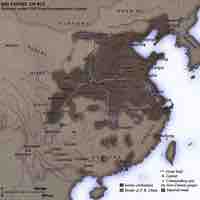Chapter 12
Chinese and Korean Art Before 1279 CE
By Boundless

Painted pottery emerged in great numbers during the Neolithic period of the Yangshao and Longshan cultures.
Jade has been used in virtually all periods of Chinese history, and the earliest jades of the Neolithic Period were often quite simple and unornamented.

The artwork of the Shang dynasty, notably bronze pieces, has been discovered through archaeological excavations.
The art of the Zhou Dynasty was characterized by the introduction of iron and the refinement of elaborate bronzework.
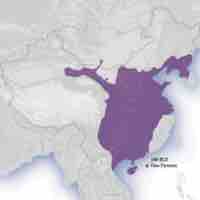
Spanning over four centuries, the Han Dynasty period is considered a golden age in Chinese history highly influenced by Confucianism.
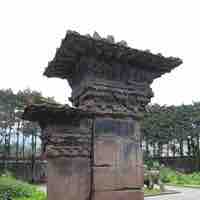
Remains of Han Dynasty architecture include ruins of brick and rammed earth walls, rammed earth platforms, and funerary stone pillar-gates.

During the Six Dynasties period (220–589 CE), people began to write about art and appreciate painting for its own beauty.
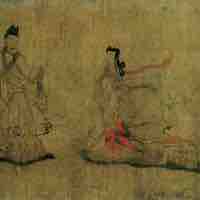
The calligraphic tradition of East Asia originated and developed from China and were greatly advanced during the Six Dynasties period.
The Six Dynasties (220-589 CE) in Chinese history was a time of great advancements in architecture.

Since the Tang Dynasty, Chinese architecture has had a major influence on the architectural styles of Korea, Vietnam, and Japan.

The Tang Dynasty is considered a golden age in Chinese civilization, and Chinese figure painting developed dramatically during this time.
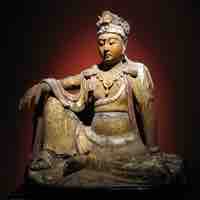
The Song Dynasty was highly influenced by Buddhism and Neo-Confucianism, which were reflected in their art.

Painting during the Song Dynasty (960–1279) reached a new level of sophistication with further development of landscape painting.
Ceramics from the Southern Song dynasty differed from the north and focused primarily on small and intimate scenes.
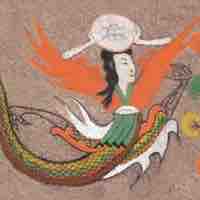
The Three Kingdoms of Korea included the Goguryeo, Baekje, and Silla Kingdoms from roughly the first century BCE to the 7th century CE.
The Silla craftsmen were famed for their gold-crafting ability and Buddhist architecture.
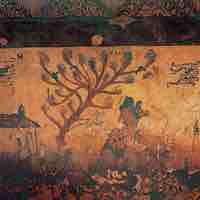
Notable aspects of Goguryeo art can be found in tomb murals that vividly depict everyday aspects of life in the ancient kingdom.

